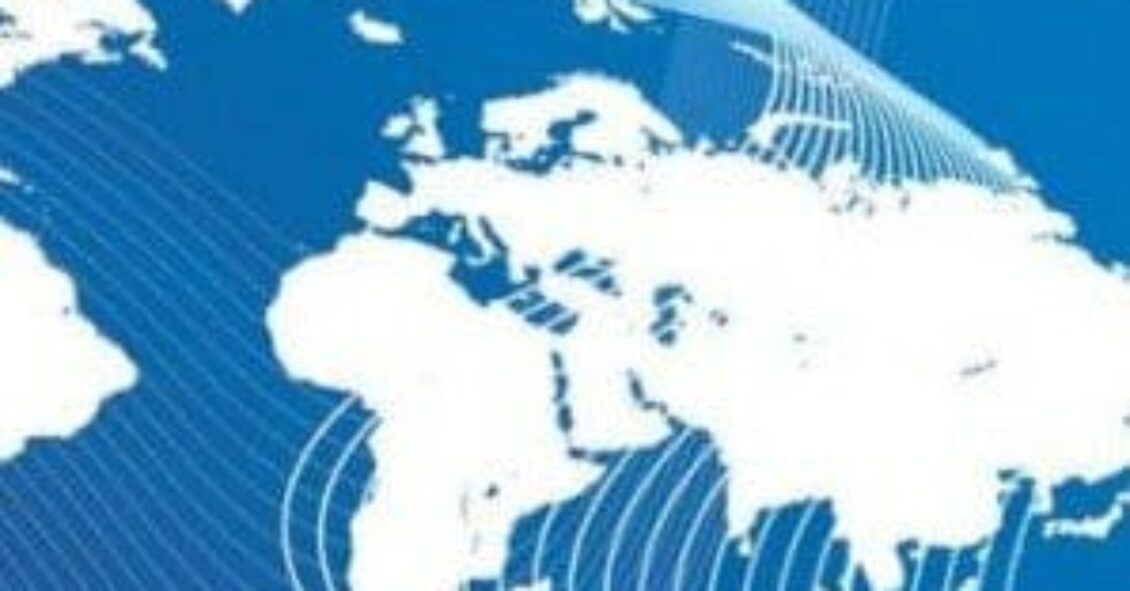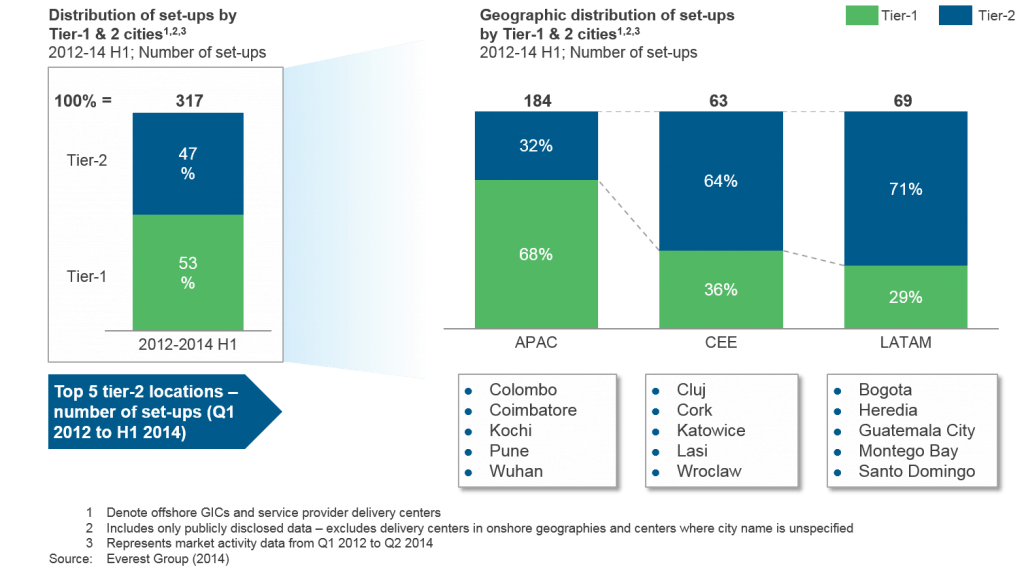
The broad picture
With both buyers and service providers increasingly understanding the benefits of tier-2 and 3 cities in their quest for greater cost savings and access to additional talent, these lower tier locations are witnessing significant growth in new set-ups and expansions.
Companies typically look for at least 10-15 percent additional cost savings over tier-1 cities to justify the business case for moving to tier-2/3 locations. But to achieve their goals, they must create a sustainable business case considering both benefits and trade-offs, e.g., a decrease in operating costs versus an increase in management overhead, and entering an established market late versus entering a relatively nascent market.
Some argue that additional cost savings over tier-1 cities can also be realized by expanding into peripheral areas within tier-1 locations (e.g., Pune/Hinjewadi and Mumbai/Navi Mumbai, versus Coimbatore, Ahmedabad, Jaipur, and Bhubaneswar) or in existing tier-1 locations through scale economies. But the “right” answer here is highly context-specific, and depends on an organization’s specific needs and priorities. For example, a company battling for talent in a tier-1 city will not benefit much by expanding to peripheral locations but can access to additional talent by setting up in tier-2/3 cities.

Central Eastern Europe (CEE) and Latin America (LATAM) both had more global services delivery set-ups in tier-2 cities than in tier-1 cities in 2012-2014 H1. Although increased activity in tier-2 locations is a relatively recent trend in Asia Pacific (APAC), it is fast catching up with the highest number of tier-2/3 set-ups among all three regions during 2012-2014 H1. Global in-house center (GIC) and service provider activity in APAC is concentrated in India, but distributed across multiple locations in CEE and LATAM. The above chart presents the top five tier-2 locations in each region.
India’s tier-2/3 city story
India continues to be an attractive offshore destination for global companies, given its unique combination of low cost, scalable talent pool, and breadth and depth of available skills. Tier-2/3 cities add to the value proposition by providing additional cost savings of 8 to 12 percent (for IT services), due to lower facilities and other operational costs.
With higher concentration risk in tier-1 cities, it is becoming increasingly important for enterprises and service providers to access talent from tier-2/3 cities.
For more information, download a complimentary preview of Everest Group’s recently released report, Tier-2/3 Locations in India for Offshore IT Services Delivery – Does Reality Meet the Hype?
Philippines: moving beyond Manila and Cebu as delivery locations
While the Philippines’ key tier-1 cities (especially Manila and Cebu) are becoming saturated, the proliferation of tier-2/3 cities offer a strong proposition. Emerging tier-2/3 cities – e.g., Dasmarinas, Malolos, Iloilo City, and Baguio – contribute 30 to 40 percent of the relevant graduate pool, and for IT-BPS offer a cost differential of 10 to 25 percent as compared to Metro Manila.
For more information, download a complimentary preview of Everest Group’s recently released report, Is Philippines Stepping Up to Lead the Industry into the Next Horizon of Global Services?
Dimensions for operationalizing a tier-2/3 delivery center
Operationalizing a center in tier-2/3 cities and successfully deriving the above-mentioned benefits requires a slightly different approach than in tier-1 locations:
Talent hiring strategy: Companies need effective talent strategies to meet the needs of experienced personnel who often need to be relocated. They also need appropriate employer branding to capture mindshare in local colleges and universities.
Client engagement and contract type: To optimize costs and improve profitability, tier-2/3 cities are likely better suited to deliver work for existing (rather than new) clients/modules.
Operating model:Tier-2/3 cities can serve as self-sufficient centers directly handling clients, and can also be structured as a spoke to tier-1 cities in certain cases.
Creating an ecosystem: Companies need to invest in infrastructure, the social living environment, and the delivery ecosystem in order to successfully operate a tier-2/3 city set-up.
Many tier-2/3 cities options with multiple benefits and opportunities are available across various regions and countries. But enterprises and service providers must take into consideration multiple associated challenges – e.g., scalability, lack of enabling environment, trade-offs with peripheral cities, and lesser breadth of skill sets – before setting up or expanding their operations in these locations. A commercial-driven business case may not be enough to evaluate these cities; what is needed is a risk-reward assessment!










